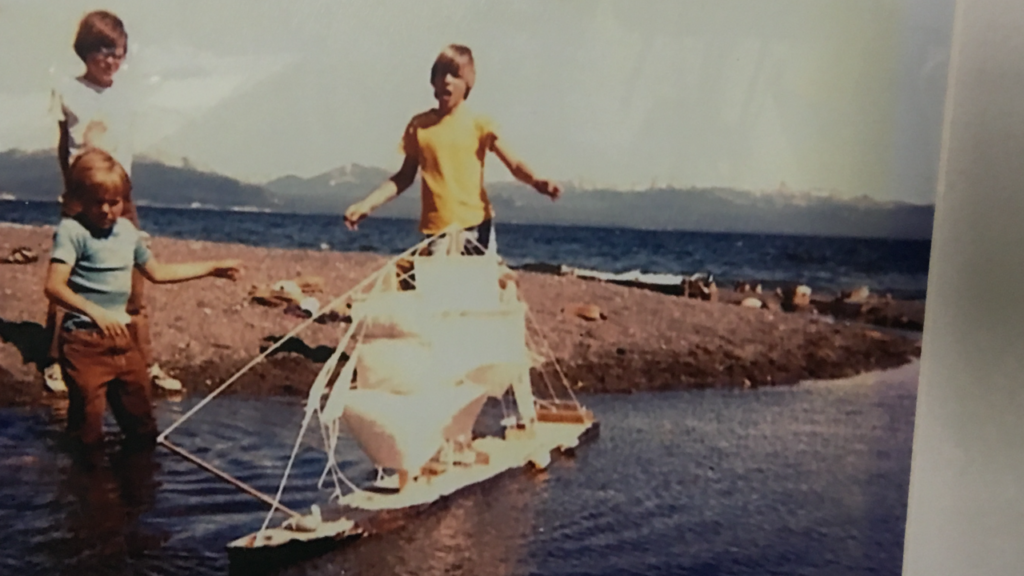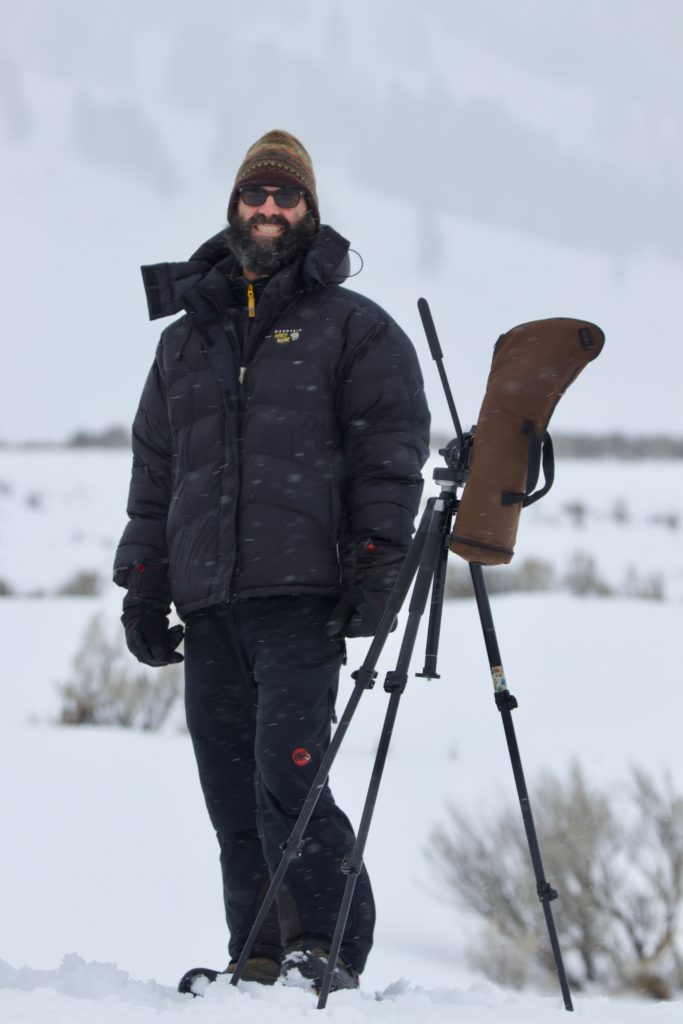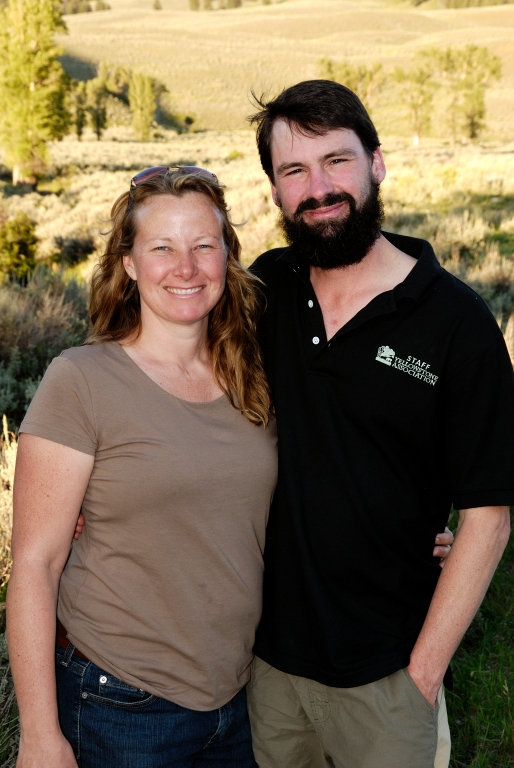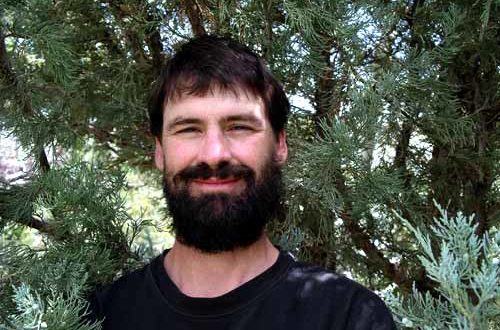It took becoming an adult and moving away to make a Yellowstone native appreciate growing up in the world’s first national park.
Nathan Varley runs a successful guide business, Yellowstone Wolf Tracker (www.wolftracker.com) from his home in Gardiner, Montana, with his wife, Linda.
Growing up the son of John Varley, a relatively well-known fisheries researcher and author with the U.S. Fish and Wildlife Service and later the National Park Service, Nathan didn’t really get that his childhood experiences were all that unusual until his city cousins came to visit.
He said he showed his cousins things they couldn’t experience near their homes.
“’Oh. You don’t have that where you’re at,’” he recalled thinking of his cousins. “We’re lucky to live in this environment.”

The family lived at park headquarters at Mammoth Hot Springs during the school year, but spent the summers Nathan was 6 to 12 at Lake Village. They lived in a seasonal trailer home not far from the iconic Lake Yellowstone Hotel near the old Lake Hospital.
He remembers those summers as a lot of fun.
“I enjoyed how much we got to explore, combing the beaches, swimming when it was hot enough, and exploring the lodgepole forests,” Nathan said.
But what about the risk of running into bears?
These days, it’s not uncommon to see 8-10 bears a day when he’s out in the park guiding small groups.
“I have a memory of grizzly bears being very rare,” he said. “This was in the 1970s, their low point, so we didn’t see them growing up, not until the 1980s.”
The rest of the year, the family lived at Mammoth. Nathan attended elementary school at Mammoth. The Mammoth Elementary School was located in Lower Mammoth across the road from the public campground. It was closed after the 2007-2008 school year. Today, the building is used as a community center.

Nathan attended the rest of his school years in Gardiner, except for the last half of his senior year in 1986. There was a devastating fire at the school, which basically burned the building to the ground. Classes were held at the YCC camp in the residential area just south of the main Mammoth compound.
He learned to downhill and cross-country ski, of course. Downhill ski lessons were offered through school. Up until the late 1980s, the park maintained a small ski hill for park employees on the south side of the road near Undine Falls, located a few miles east of Mammoth on the road to Tower. There was a small rope-tow and a warming hut. The warming hut burned down in the fires of ’88, he recalled.
And just as his city cousins learned about nature visiting Yellowstone, Nathan learned about the big city visiting his cousins and other family. He enjoyed trips to Salt Lake City to visit his grandmother, and the most-visited cousins lived in Oakland, California. He learned big-city skills from his “street-smart” cousins.
After college at Montana State University in Bozeman—majoring in wildlife biology—Nathan moved around, living in Idaho and Alaska. He spent 8 months on a wildlife study in South America’s Patagonia region tracking a wild llama species.
In 1995, when the prospect of spending an unemployed winter in Alaska loomed large, Nathan returned to the park. He lived with his parents and secured volunteer work with the park’s wolf recovery project. Eight wolves captured in Canada were brought into the park on Jan. 12, 1995.
“It was really exciting,” Nathan said. “And I began to appreciate the world-class ecosystem of Yellowstone, and I made a connection at that point.”
Nathan continued working with wolves and earned a Ph.D. from the University of Alberta collaborating with the wolf project on the relationship between wolves and the Northern Range elk herd.

And then about 10 years, Nathan and Linda, also a wildlife biologist, started their own tour company. Today it’s known as Yellowstone Wolf Tracker, specializing in small groups who want an expert to take them places where they’re most likely to see wolves.
The Varleys stay busy nearly year-round, with summer and winter seasons and a little down time in the fall and spring. He said the park’s recent record-breaking attendance years hasn’t changed their tour significantly because they start so early in the morning. But if visitation remains in the 4+ million range, something will have to be done to protect the park.
“Overall visitation is going to be a problem they’re going to have to tackle in this decade,” he said.
And of course, running a guiding business, it’s hard to guarantee they’ll see a particular species on any particular day, and his guests understand that.
“It tends to work out,” Nathan said, with obvious affection in his voice, “Because there’s a magical day in Yellowstone almost every day you go out.”
 Yellowstone Insider Your Complete Guide to America's First National Park
Yellowstone Insider Your Complete Guide to America's First National Park






You must be logged in to post a comment.